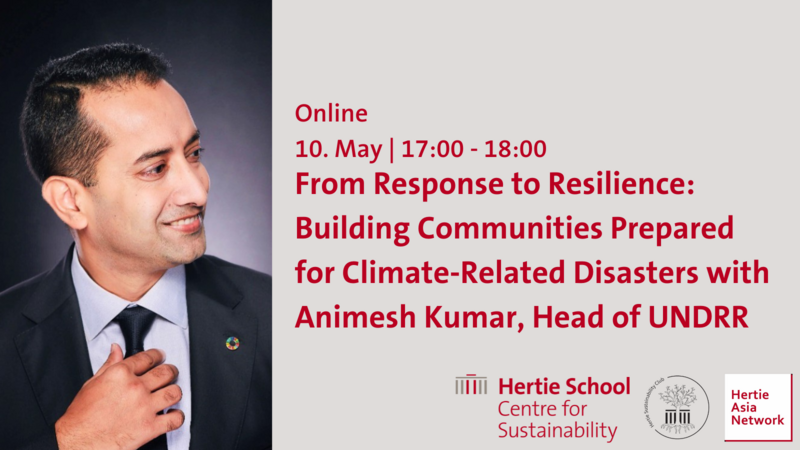
Are you interested in learning about a practioner's point of view on disaster risk reduction?
In a conversation with Dr. Animesh Kumar, Head of the United Nations Disaster Risk Reduction (UNDRR) Office in Bonn, this event will look at how to move from response-based action to being resilient and how to best build resilient communities. More specifically, we will also look at the nexus between climate change and disaster risk reduction, its increased impact on vulnerable communities and how to move forward. Participants will have the opportunity to ask questions at the end. This event is hosted by the student clubs Hertie Asia Network and Sustainability Club. It is supported by the Centre for Sustainability.
About our Speaker
Dr. Animesh Kumar currently serves as the Head of the United Nations Disaster Risk Reduction (UNDRR) Office in Bonn, which is a global facility for comprehensive disaster and climate risk management, climate action, disaster data and monitoring. This office operates as part of the UNDRR HQ's Risk Knowledge Branch and collaborates with various partners to lead global efforts on climate negotiations, alliances, disaster-related statistics, and monitoring of the Sendai Framework and SDGs.
Previously, Animesh worked as the Deputy Head of the UNDRR Regional Offices in Asia-Pacific (Bangkok) and Africa (Nairobi), where he spearheaded regional policy and coordination on disaster risk reduction through inter-governmental and stakeholder mechanisms. He is recognized for his contributions to over 50 UNDRR publications in these positions and was honored with the UNDG Silver Award in 2016 in Africa for his work.
He also served as the Programme Advisor for DRR and Climate Change for the Government of Ethiopia during 2009-2013, where he developed a risk assessment model for the country and coordinated the development of tools for risk mitigation, early warning systems, and contingency planning. This resulted in localized risk profiles in over 250 districts in Ethiopia.

